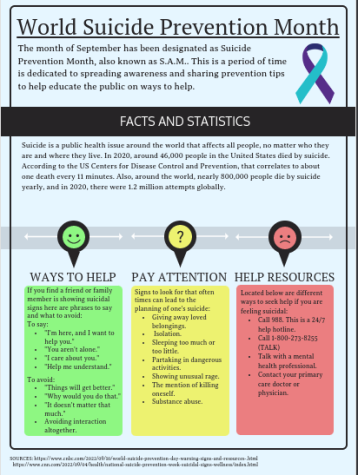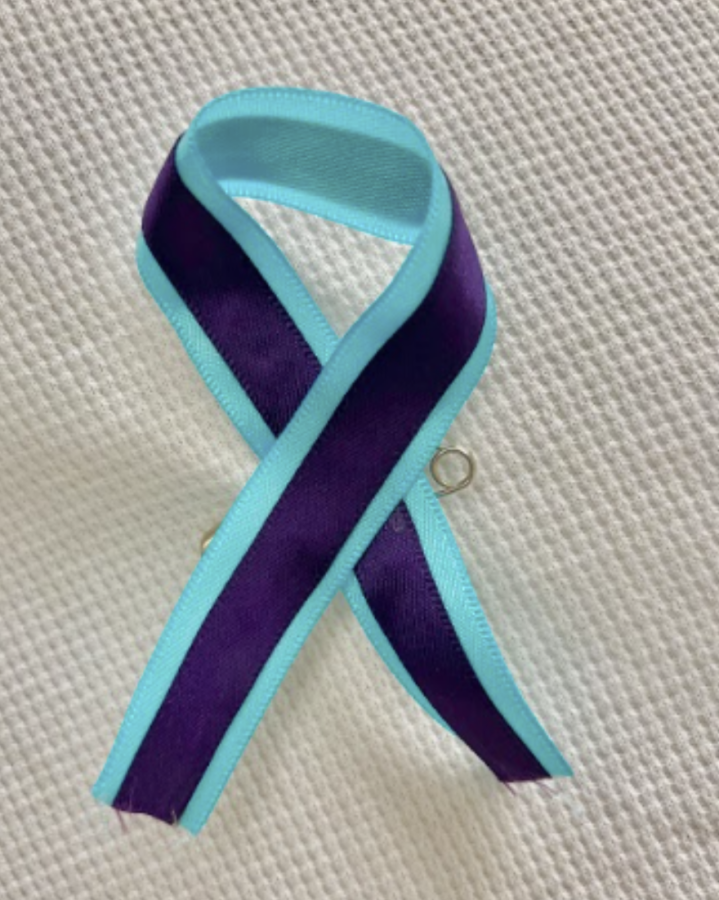Mental Health Advocacy Rekindles With New School Year
Suicide awareness month honored with blue and purple mental health ribbons
October 3, 2022

In the ever-changing world of mental health transparency, a flood advocacy is emerging for the signs and dangers of untreated mental illness. But that advocacy is not commonly seen in teenagers— especially as insightfully as senior Alyssa Hough does it.
Hough, who is vocal about her struggles with mental health online and on her Instagram, believes that the most important thing that she can do is to let people know that the emotions they feel and struggles they go through are valid, even when told otherwise.
“I’ve been told on multiple occasions that I’m overreacting, I need to move on, get over it, grow up,” Hough said. “the truth is, you can’t do any of that unless you realize you’re not alone.”
September is the designated Suicide Awareness Month, or S.A.M, and Hough isn’t the only one talking about her mental health journey. A recent trend on TikTok, the video sharing app, has users vocalizing their experiences with depression, anxiety, PTSD, and other mental illnesses. Ultimately, the goal for these videos seems to be to let others know that they aren’t alone—and it’s working.
More locally, S.A.M stresses the importance of preparing for a new school year and preventing students from letting academics inhibit their mental health.
“I think school is very stressful because of the heavy amounts of work.” Junior Abby Stern said. And it’s true—in an article written by Johns Hopkins University, it’s shown that students prioritize academics over personal relationships, physical, and mental health. Eventually, this can (and often does) lead to a decline in academic performance.
To optimize academics and prioritize mental health, the university also writes that good time management, keeping an eye out for inflated stress levels, and avoiding perfectionism can help keep darker thoughts at bay.
Senior Pearson Dhillon is the Leadership Chair of NHS, a student athlete, and takes numerous AP classes. He keeps a list of things he can do and people he can talk to to keep his mental health in check.
“Usually I will try to minimize my stress by talking it out with close friends or family,” Dhillon said, “try to make a list to prioritize my do’s so I don’t feel out of control, put in extra work to limit how behind I get, workout, and treat myself afterwords with food hanging with friends.”
The National Alliance on Mental Illness, or NAMI, highlights the common warning signs found in people struggling with mental illness. Students who are worried for themselves or another person should tell a trusted adult immediately. From there, it’s easier to curate steps to recovery that will benefit said student personally.
Not every student will be able to reach out on their own. Reaching out for help is scary to many— but 1 in 5 youth and young adults struggle with mental health, according to NAMI. Chances are, there’s someone who relates and can be a guide on where to go next.
“When you realize someone else can also understand what you’re going through and you know you can reach out to them, everything slowly starts coming together.” Hough said. “You can talk about stuff— and you don’t have to keep everything bottled in.”









